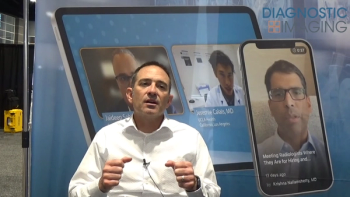
The Reading Room Podcast: A Closer Look at Remote MRI Safety, Part 2
In the second of a multi-part podcast episode, Emanuel Kanal, M.D. and Tobias Gilk, MRSO, MRSE, share their perspectives on remote MRI safety protocols for ensuring screening accuracy and adherence to conditional implant guidelines as well as a rapid and effective response to adverse events.
When one considers the variety of responsibilities of an on-site magnetic resonance imaging (MRI) technologist, Emanuel Kanal, M.D., noted in a
“Who today is in charge of overseeing that adverse event? The technologist. … Who is responsible for screening the patient? The technologist. Who is responsible for injecting them? The technologist. Who is responsible for answering the phones? The technologist,” noted Dr. Kanal, the chief of the Division of Emergency Radiology and director of Magnetic Resonance Services with the University of Pittsburgh Medical Center in Pittsburgh, Pa.
“ … In so many of our sites, the MR technologist is the only line of defense. They do everything. We hold them responsible for every single thing that has to do with safety in that environment. And for the first time, we just gave them an assistant.”
Tobias Gilk, MRSO, MRSE, added that clearly defined roles for the remote MRI technician and the on-site individual working with the patient may “reduce the frequency and severity” of adverse events.
“Whether it's an adverse reaction to contrast, whether it's a projectile event, whether it's a quench, in all of those situations, we're essentially in clean-up mode, right? I think one of the things that's really interesting is the potential that by actively managing patients and screening and the physical environment, as Dr. Kanal was describing, with specialization right, one individual is specialized to operating the scanner safely and effectively, and one individual is specialized in managing the environment and the individuals who operate within it,” noted Gilk, the founder of Gilk Radiology Consultants, a senior vice president of RADIOLOGY-Planning, and a board member of the American Board of Magnetic Resonance Safety (ABMRS).
(Editor’s note: For related content, see “
For more insights from Emanuel Kanal, MD and Tobias Gilk, listen below or
Newsletter
Stay at the forefront of radiology with the Diagnostic Imaging newsletter, delivering the latest news, clinical insights, and imaging advancements for today’s radiologists.




























